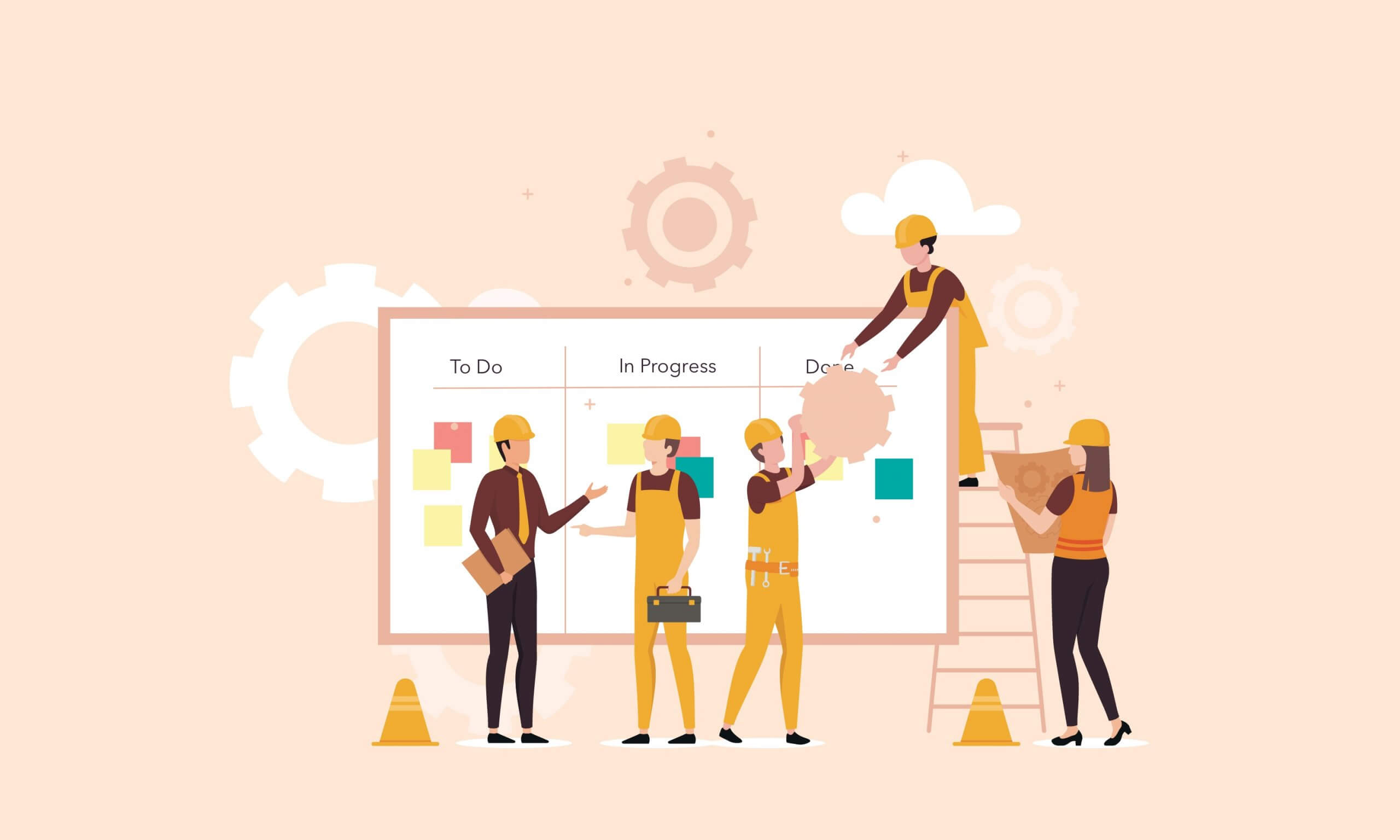3 Vital Agile Methodology Steps How Not to Bungle the Projects

Here is Agile again – most of the specialists are talking only about how it is good, effective, impactful, and many other epithets. But few are aware that Agile is rather difficult and can be adaptable to limited types of projects.
In our today’s article, we are absolutely ready to disclose all the pitfalls of Agile and the cases when it is hard to implement into a certain project. Moreover, we want to give you useful tips on how to meet your projects with fundamental Agile methodology steps.
Agile methodology truth: what it is for and when Agile is not suitable
There are lots of many different materials and posts dedicated to Agile advantages and its fantastically useful practices. To be honest, most of the said is true: Agile is a quite comfortable approach to project planning, and it allows professionals to lead their projects in a more consistent manner.
Although we have touched a very sensitive subject – Agile methodology is actually not for every project. Indeed, Agile is a set of some techniques and practices that make the development group and all the involved specialists work in accordance with some specific, rather difficult and even challenge rules and activities. Trying to put Agile basics into practice with a lack of experience, teams may face some sudden troubles and displeasing matters. As a result of their complete disappointment in Agile, we can see some strange and unflattering feedback about this system. Of course, it does not have to be this way!
Agile methodology is a good way for those companies where:
- there is a strong and consolidated team consists of experienced specialists and senior-level developers. It is crucial the team that is going to side with Agile philosophy should have enough experience and practice in working in accordance with the classical model of project development;
- the team that is accustomed to quick project development or that is capable to do this job. It is all because of the main specialty of Agile – the process of project development is executed in the forms of sprints, i. e., short periods of the active creation of the project parts;
- there are competent and sane top managers who are open to reasonable discussions and are ready for a closer cooperation with their teams because Agile does not welcome different kinds of bureaucracy and formal hierarchy.
Agile methodology is not a good idea in the following cases:
- when the company does not have at least a couple of specialists that have worked with Agile. The rushing through Agile methodology principles is not enough for a proper project management;
- if the project contains some vague terms and specifications – Agile methodology implies an accurate work with attention to details and many tests for the product, so it is quite impossible to use Agile with complicated things;
- when the customer is not ready to collaborate with the company closely due to many different reasons. It is not helpful for Agile projects, because it is necessary to stay in touch with customers during all the process of project management.
Besides, even the best Agile practices are of no avail when none of the specialists is interested in the project. The main point of this project management methodology is to have a pronounced motivation in the project execution. Thus, when nobody believes in this project and does not want it to be implemented as is right and proper, it is better not to use Agile at all.
Main Agile methodology steps for project par performance

So, we figured out how and when Agile methodology can be useful, and when it is absolutely inapplicable. Like any complex system, Agile has a number of its important components, that determine the direction of the entire project development work. It is important for each of the stages to be executed correctly.
We collected our tips on how to make your project flawless in accordance with three fundamental steps of Agile methodology. Read them all and make your mental notes of it!
Step 1. Prioritization of the project purposes
This is the initial part of the work, when the development team, project, and product managers come together and make work planning. All the professionals decide how the project will look, write user stories about the features of the project that should be added to its structure and functionality.
It is necessary to use the following methods during this stage of work:
- work planning begins with a proper allocation of roles in the development process: it is necessary to make sure every team member is responsible for a certain area where he is absolutely well-grounded and has enough experience
- in order to build a consistent workflow without any problems and loses, use different prioritizing techniques and calculate the importance and necessity of every feature you would like to implement into the work
- it is unnecessary to plan the entire work at once – long-term Agile planning is possible, but it is not so important to practice it with each project. Calculate your project activities and tasks for the initial sprint and follow your plan.
Step 2. Development and technical iterations
There is the main and the most essential part of the Agile methodology project development: a team of developers, QA engineers, designers, in the lead of a project manager, creates the internal and external components of the project and checks and tests them all. Every iteration (or sprint) has its special needs, goals and proposed results, so it is necessary to achieve them in order to meet a project schedule.
There you do not need to make something unique – you should not make some typical mistakes, as follows:
- it is useless to run over schedule – it may seem strange but it is so. Even if you have done your work scope earlier than it is expected, it does not make any sense because the project development is like a united system where every process depends on each other. But if you are always in perfect timing, you can help your colleague with his work!
- do not forget about the project documentation writing! Agile really appreciate turnkey projects which are easy to be monitored and supported in future, so do not ignore such a part of the development.
Step 3. Product releases
When the project has its certain completed part that can function by itself, it is the time to make a release. The whole team and all the specialists and stakeholders, involved in the project creation, present their product to the customers and tell them how it works.
During this stage, the main thing is to make everything on time and not to miss all the necessary requirements of the project received from the customer. Indeed, the company is waiting for their completed product – and they definitely want to see it as the dream comes true. So do not get your customers down with their expectations!
Conclusion
As can be seen, the Agile methodology project is not just an interesting working experience – it is the whole strategy and a special approach to professional thinking and project management. Now it becomes clearer Agile methodology requires many knowledge, working skills, and efforts to make a successful project with it.
We would also be happy to know about your personal experience with Agile and how you find your Agile workflow – please write to us about it in the comments of the article.



